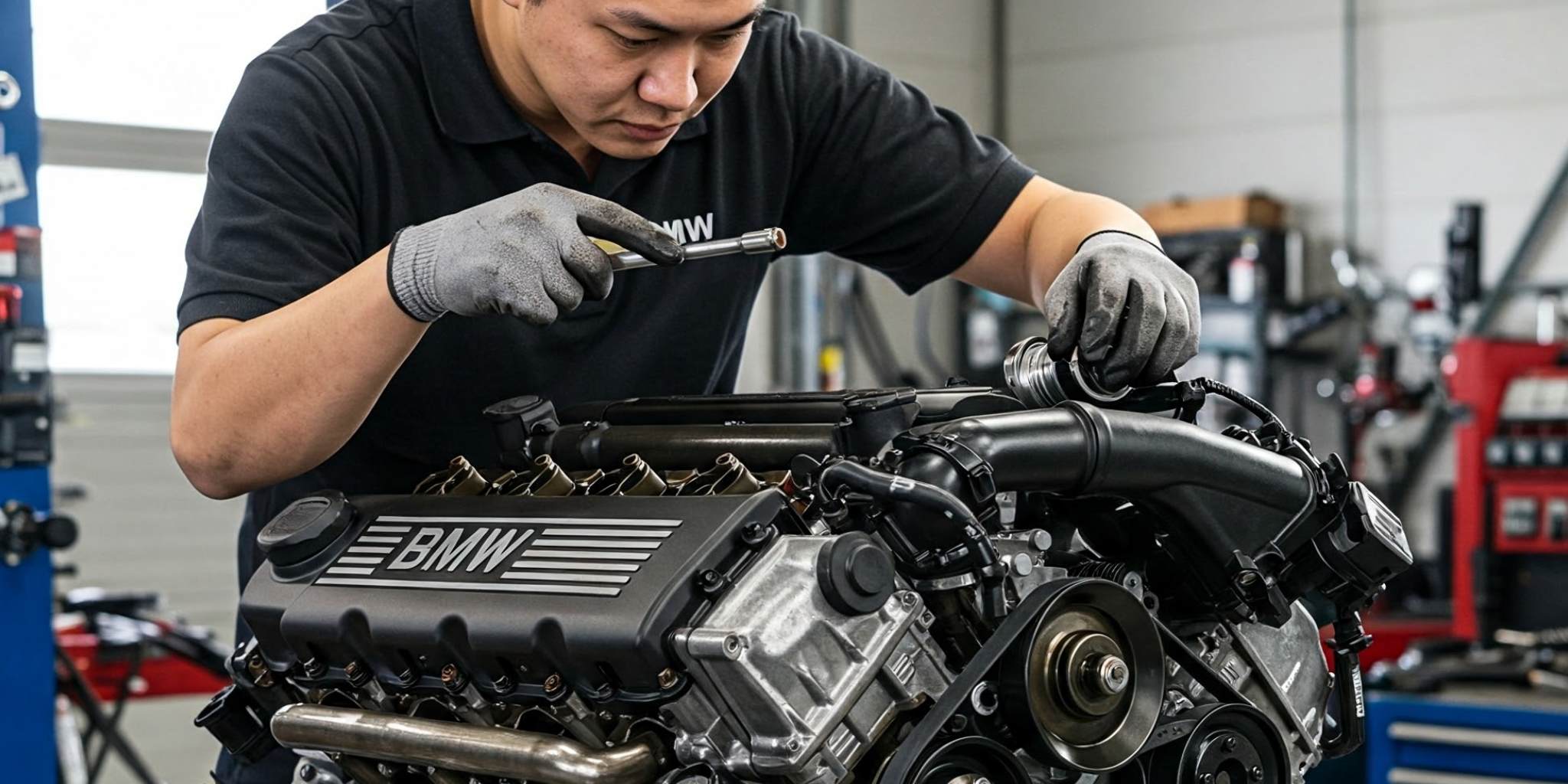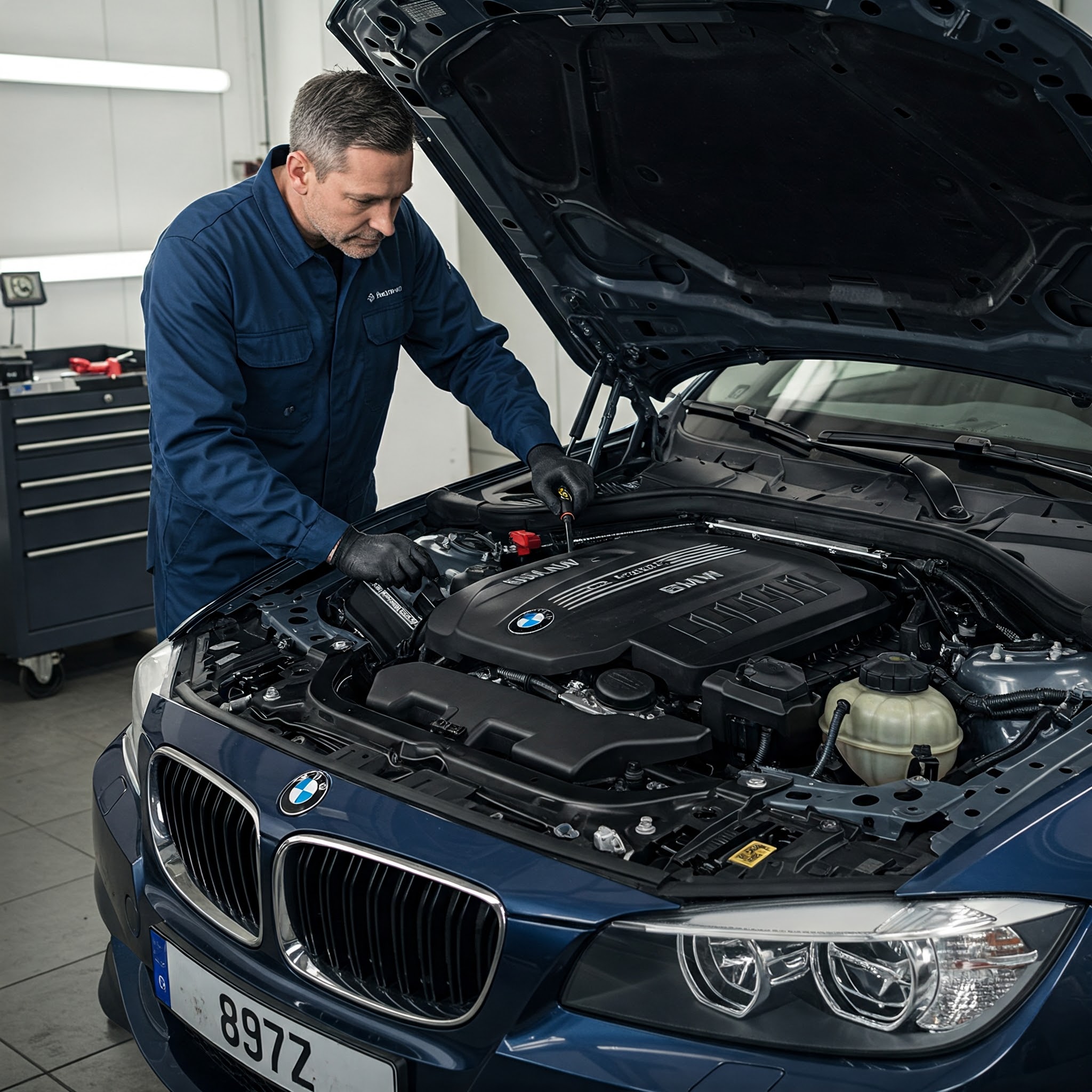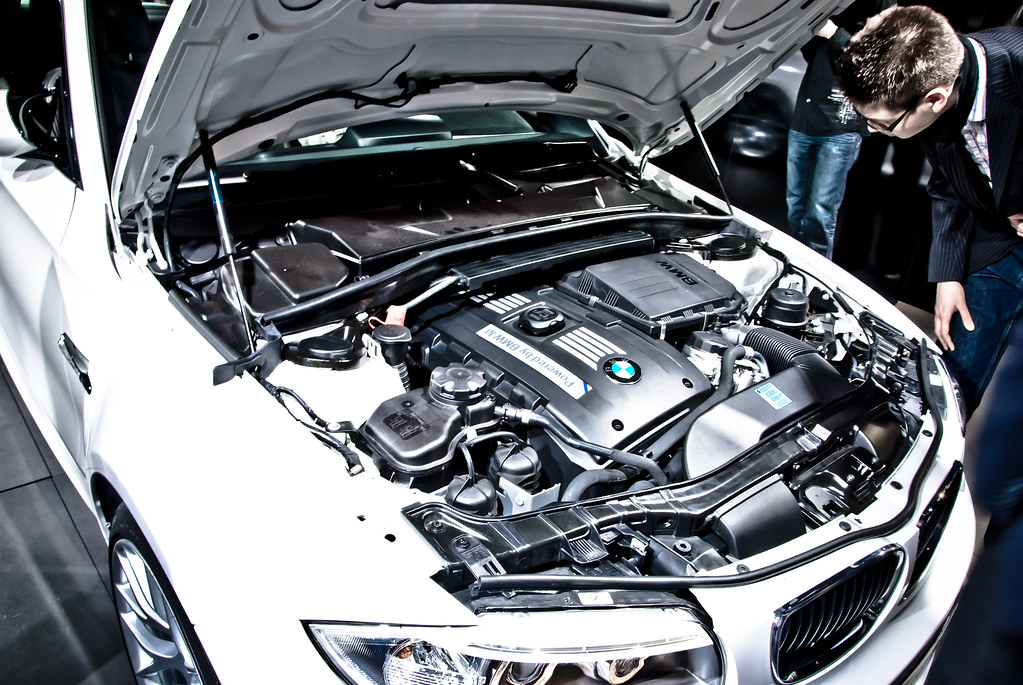
Unlocking Performance: A Comprehensive Guide to BMW Engine Rebuild
Rebuilding a BMW engine is an exciting adventure for car lovers. It’s not just about fixing things; it’s a chance to learn more about how your car works and to make it even better. This guide will walk you through everything you need to know about a BMW engine rebuild, from understanding the basics to keeping your engine running smoothly after the rebuild.
Key Takeaways
- Rebuilding a BMW engine can enhance its performance and extend its life.
- Gather all necessary tools and parts before starting the rebuild process.
- Carefully label and organize parts during disassembly for easier reassembly.
- Follow the manufacturer’s guidelines for torque specifications and assembly.
- Regular maintenance after the rebuild is crucial for long-lasting performance.
Understanding the Basics of BMW Engine Rebuild

Rebuilding a BMW engine is a detailed process that requires knowledge and skill. Understanding the key components of the engine is essential for a successful rebuild. Here are some important aspects to consider:
Key Components of a BMW Engine
- Engine Block: The main structure that houses the cylinders.
- Pistons: Move up and down within the cylinders to create power.
- Crankshaft: Converts the linear motion of the pistons into rotational motion.
- Cylinder Head: Contains the valves and is crucial for airflow.
Common Reasons for Rebuilding
- Wear and Tear: Over time, engine parts can wear out.
- Overheating: Can cause significant damage to engine components.
- Oil Leaks: Indicate that seals or gaskets may need replacement.
Benefits of Rebuilding Your BMW Engine
- Improved Performance: A rebuilt engine can run more efficiently.
- Cost-Effective: Often cheaper than buying a new engine.
- Customization: Allows for upgrades to enhance power and efficiency.
Rebuilding your BMW engine not only restores its performance but also extends its lifespan, making it a worthwhile investment for any car enthusiast.
In summary, understanding the basics of a BMW engine rebuild involves knowing the key components, recognizing common issues that necessitate a rebuild, and appreciating the benefits that come with it. This knowledge sets the foundation for a successful engine rebuild, ensuring that your BMW runs smoothly for years to come. Remember, expert BMW repair services can provide valuable assistance throughout this process, ensuring quality and reliability in your rebuild.
Preparing for a BMW Engine Rebuild
Before you start rebuilding your BMW engine, it’s important to be well-prepared. Gathering the right tools and parts is essential for a smooth process. Here are some key steps to follow:
Essential Tools and Equipment
- Engine rebuild kit
- Torque wrench
- Socket set
- Screwdrivers
- Feeler gauge
- Plastigage
- Piston ring compressor
- Gasket set
- Engine degreaser
- Shop towels
Having these tools ready will help you work efficiently.
Safety Precautions to Consider
- Always wear safety goggles and gloves.
- Ensure your workspace is well-ventilated.
- Keep flammable materials away from your work area.
Choosing the Right Parts for Your Rebuild
When selecting parts, consider the following:
- Use high-quality OEM or aftermarket parts.
- Check compatibility with your specific BMW model.
- Look for performance upgrades if desired.
Preparing thoroughly can make the rebuilding process much easier and more successful. Remember, expert BMW mechanic services can provide valuable assistance if needed.
Step-by-Step Guide to Disassembling a BMW Engine
Disassembling a BMW engine is a crucial step in the rebuilding process. Taking your time and being careful is essential to ensure everything goes smoothly. Here’s how to do it:
Disconnecting and Labeling Components
- Start by disconnecting the battery to prevent any electrical issues.
- Remove the engine cover and air intake system.
- Label all wires and hoses as you go to make reassembly easier later.
Removing the Engine Block
- Drain the coolant and engine oil before starting.
- Carefully remove the radiator and hoses.
- Loosen the fan and belt, then take out the alternator and other components.
- Detach the exhaust and intake manifolds.
Inspecting for Wear and Damage
After removing the engine block, inspect each part:
- Look for signs of wear or damage on critical components like the pistons and crankshaft.
- Measure important dimensions to ensure everything is within specifications.
- Pay special attention to the cylinder head for any cracks or warping.
Remember, thorough disassembly and inspection are key to a successful rebuild. Taking notes and photos during this process can help you keep track of everything.
By following these steps, you can ensure that your BMW engine is ready for a successful rebuild. This careful approach will help you identify any issues that need to be addressed before reassembling the engine.
Cleaning and Inspecting BMW Engine Parts
Techniques for Effective Cleaning
Once you have taken apart your BMW engine, cleaning each part thoroughly is crucial. Here are some effective techniques:
- Use a solvent to break down grease and oil.
- Rinse parts with hot water to remove any remaining debris.
- Blow dry components with compressed air to ensure they are completely dry.
Identifying Parts for Replacement
During the inspection, look for signs of wear or damage. Key components to check include:
- Pistons: Look for scratches or cracks.
- Cylinder head: Check for warping or cracks.
- Gaskets: Inspect for any signs of leaks.
Measuring Critical Dimensions
To ensure your engine runs smoothly, measure important dimensions:
| Component | Measurement Type | Ideal Range |
|---|---|---|
| Cylinder Bore | Diameter | 84.0 – 84.5 mm |
| Piston Ring Gap | End Gap | 0.20 – 0.50 mm |
| Valve Clearance | Height | 0.15 – 0.25 mm |
Remember: A thorough inspection and cleaning process is essential for a successful rebuild. It helps in maintaining the engine’s performance and longevity.
By following these steps, you can ensure that your BMW engine parts are clean and ready for reassembly, setting the stage for optimal performance.
Reassembling Your BMW Engine with Precision

Following Torque Specifications
When reassembling your BMW engine, it’s crucial to follow the torque specifications provided in your workshop manual. This ensures that all components are secured properly, preventing any potential failures. Here are some essential steps to follow:
- Refer to the manual for the correct torque values for each bolt.
- Use a torque wrench to apply the specified torque evenly.
- Follow the recommended sequence for tightening bolts to avoid warping or misalignment.
Lubricating Moving Parts
Before putting everything back together, make sure to lubricate all moving parts. This is vital for smooth operation and longevity. Use clean engine oil or assembly lubricant on:
- Pistons
- Bearings
- Camshaft
Ensuring Proper Alignment and Fitment
Proper alignment is key to a successful engine rebuild. Here’s how to ensure everything fits perfectly:
- Double-check that all components are clean and free of debris.
- Align the engine block and cylinder head carefully before tightening.
- Use alignment tools if necessary to confirm everything is in place.
Remember, taking your time during reassembly can save you from future headaches. Precision is key to a successful rebuild!
Testing and Tuning Your Rebuilt BMW Engine
After you’ve put your BMW engine back together, it’s time to see how well it runs. This part is crucial to ensure everything is working as it should. Here’s what you need to do:
Performing a Compression Test
- Check the cylinder pressure to make sure it’s within the right range. This helps you see if the engine is sealing properly.
- Use a compression gauge to measure the pressure in each cylinder.
- Compare the results to the manufacturer’s specifications.
Conducting a Leak-Down Test
- This test helps find any air leaks in the engine.
- It checks if the valves are sealing correctly.
- You’ll need a leak-down tester for this.
Fine-Tuning for Optimal Performance
- Start the engine and let it run for a while.
- Monitor important readings like oil pressure and coolant temperature.
- Make adjustments as needed to improve performance.
Remember, testing your engine is essential to ensure it runs smoothly and efficiently. If you notice any issues, don’t hesitate to consult a professional for help.
By following these steps, you can ensure your rebuilt engine performs at its best. If you need expert help, consider reaching out to a shop that specializes in BMW repair in Broadmoor. They can provide valuable insights and assistance to get your engine running perfectly.
Maintaining Your Rebuilt BMW Engine for Longevity
Regular Maintenance Tips
To keep your rebuilt BMW engine running smoothly, follow these essential maintenance tips:
- Change the oil regularly to ensure clean lubrication and prevent engine wear. Regular oil changes are vital for your BMW’s performance and longevity.
- Check and replace the air filter to maintain optimal airflow and engine efficiency.
- Monitor coolant levels and ensure the cooling system is functioning properly to prevent overheating.
Signs of Potential Issues
Be aware of these warning signs that may indicate problems with your engine:
- Unusual noises, such as knocking or ticking sounds.
- Decreased power or acceleration.
- Warning lights on the dashboard, especially the check engine light.
When to Seek Professional Help
If you notice any of the signs mentioned above, it’s crucial to consult a professional. Here are some situations where expert assistance is necessary:
- If you experience persistent engine issues despite regular maintenance.
- When you need a thorough diagnostic to identify underlying problems.
- If you’re unsure about performing repairs or maintenance yourself.
Remember, regular maintenance is key to ensuring the longevity of your rebuilt engine. By staying proactive and attentive, you can enjoy the performance and reliability of your BMW for years to come.
Final Thoughts on BMW Engine Rebuilding
Rebuilding a BMW engine can be a fulfilling experience that brings your car back to life. With the right tools and knowledge, you can successfully complete this project at home. Always remember to follow the instructions in your rebuild kit and stick to the manufacturer’s guidelines. Take your time, check your work carefully, and run all necessary tests to ensure your engine is reliable and powerful. Enjoy the journey of rebuilding, and soon you’ll be back on the road, enjoying the performance of your newly rebuilt BMW.
Frequently Asked Questions
What is involved in rebuilding a BMW engine?
Rebuilding a BMW engine includes taking it apart, checking for any damage, cleaning the parts, replacing worn-out pieces, and putting it back together carefully.
Why would someone want to rebuild their BMW engine?
People rebuild their BMW engines to fix problems, improve performance, or extend the engine’s life.
Can I rebuild my BMW engine myself?
Yes, you can rebuild your BMW engine yourself, but it’s a tough job that needs special tools and knowledge. It’s good to get help from a professional if you’re unsure.
How much does it cost to rebuild a BMW engine?
The cost to rebuild a BMW engine can vary a lot depending on the parts needed and the labor involved. It’s best to get a quote from a service center.
How long does it take to rebuild a BMW engine?
Rebuilding a BMW engine can take anywhere from a few days to a couple of weeks, depending on the complexity of the job and the availability of parts.
What should I do to maintain my rebuilt BMW engine?
To keep your rebuilt BMW engine in good shape, follow regular maintenance tips like changing the oil, checking for leaks, and watching for any unusual sounds.

